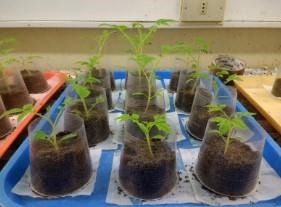Plant-parasitic nematodes are unwelcome guests in agricultural soils. They attack plants at their roots and use the plant as a food source to support their own reproduction and growth. By stealing the plant’s resources to grow and multiply, nematodes cause yellowing, stunting, wilting, and declines in yield.
Understanding the movement of nematodes through the soil is important to helping farmers protect their crops. How fast do they move? How far can they travel? How does soil moisture affect their movement? Answers to these questions could help prevent crop damage and losses.

Sebastián González Bernal is a researcher at Pontificia Universidad Católica de Valparaíso in Chile. He studies a type of nematode called Meloidogyne ethiopica. This is a highly aggressive plant-parasitic nematode species. His team examined the speed of Meloidogyne ethiopica under different soil moisture conditions.
This study was published in Agronomy Journal, a publication of the American Society of Agronomy.
Using tomato plants, the researchers set up an experiment. The plant-parasitic nematodes were placed into the soil at different soil moisture levels and multiple distances from the plant roots. The researchers then monitored a microscopic race to see how long it would take for the nematodes to reach the tomato plant roots.
The nematodes were given up to 26 days to reach the finish line. “Knowing the speed of migration nematodes has enormous applications for farmers because they can control damage to plants by managing irrigation frequency,” González Bernal explains.
Click here to see more...